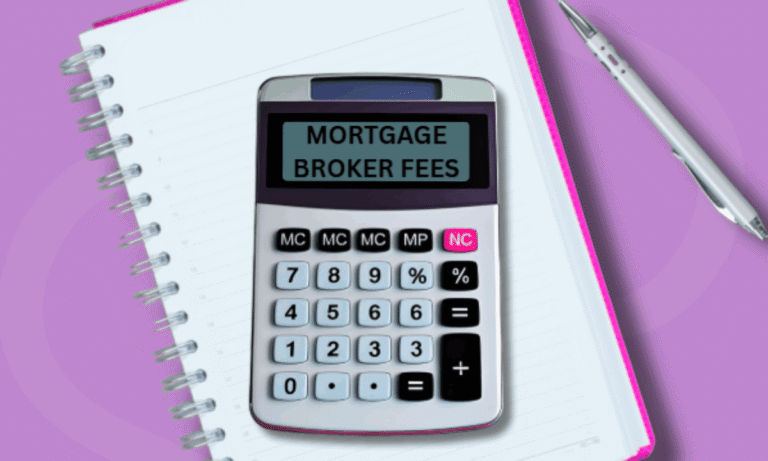Mortgage Broker Commission: Everything You Need to Know
When you’re looking to buy a home or refinance your mortgage, one question often comes up: how do mortgage brokers get paid? The answer lies in the mortgage broker commission, a fee structure that compensates brokers for their services. While many borrowers wonder if using a broker costs more, the truth is that commissions work differently than most people think. Understanding how brokers earn, what affects their commission, and how it impacts your mortgage choice can save you money and stress during the loan process.
What Is a Mortgage Broker Commission?
A mortgage broker commission is the payment a broker receives for arranging a loan between a borrower and a lender. Instead of charging borrowers directly, brokers typically get paid by the lender after the loan closes.
Definition (Snippet-Friendly)
A mortgage broker commission is the fee paid to a mortgage broker, usually by the lender, for securing a borrower’s mortgage. It’s often a percentage of the total loan amount, typically ranging from 0.5% to 2.75%.
How Mortgage Brokers Earn Their Commission
Mortgage brokers don’t earn a flat salary from banks. Instead, their income depends on successfully helping borrowers find and close a mortgage.
Two Main Commission Types
- Upfront Commission
- Paid once the loan settles.
- Based on a percentage of the total loan amount.
- For example, if the commission is 0.65% on a $400,000 mortgage, the broker earns $2,600.
- Paid once the loan settles.
- Trail Commission
- An ongoing payment made by the lender while the loan remains active.
- Usually between 0.1% and 0.25% annually.
- Encourages brokers to maintain long-term borrower relationships.
Factors That Influence Mortgage Broker Commission
Not every broker earns the same commission. Several factors determine the amount:
- Loan Size – Larger loans mean higher commission.
- Lender Policies – Some lenders offer higher or lower commission rates.
- Loan Type – Investment loans may carry different commission structures than owner-occupied loans.
- Market Conditions – In competitive markets, commission percentages may decrease.
- Broker Experience – Established brokers often negotiate better deals.
Mortgage Broker Commission vs. Bank Loan Officer Salary
Borrowers often wonder: Why use a broker when banks have their own loan officers?
| Feature | Mortgage Broker | Bank Loan Officer |
| Payment Source | Commission (lender-paid) | Salary (with potential bonus) |
| Loan Options | Multiple lenders, more choice | Single bank’s products |
| Incentives | Find best fit for borrower | Sell bank’s loans |
| Cost to Borrower | Usually free | Usually free |
👉 Using a broker doesn’t typically cost more, but it gives you access to more loan products.
Are Mortgage Broker Commissions Transparent?
Regulations require brokers to disclose how they are paid. In many countries, consumer protection laws ensure borrowers understand whether the broker is compensated by the lender, the borrower, or both.
- Full Disclosure – Brokers must explain their commission percentage before you commit.
- Conflict of Interest – Some critics argue higher commissions could tempt brokers to recommend certain lenders.
- Best Interest Duty – In many jurisdictions (like Australia, UK, and parts of the U.S.), brokers must legally act in the borrower’s best interest.
Pros and Cons of Mortgage Broker Commission
Pros
- No upfront cost for most borrowers.
- Incentivizes brokers to secure the loan.
- Provides access to multiple lenders.
- Trail commissions encourage ongoing service.
Cons
- Commission differences may bias broker recommendations.
- Larger loans generate higher income for brokers, potentially influencing advice.
- Borrowers may not always see commission details unless they ask.
How Much Do Mortgage Brokers Really Make?
Mortgage broker income varies widely. A beginner might earn modest commissions, while a seasoned broker with a large client base could make six figures annually.
- Example 1: $300,000 loan at 0.65% = $1,950 commission.
- Example 2: $700,000 loan at 0.6% = $4,200 commission.
- Example 3: Same loan with a 0.2% trail = $1,400 annually in ongoing income.
This system rewards brokers for both quantity and quality of loans.
Mortgage Broker Commission Caps and Regulations
To protect consumers, many countries set limits on how much brokers can earn.
- United States – Brokers cannot be paid based on loan terms (e.g., interest rate).
- United Kingdom – Strict transparency rules apply.
- Australia – Commissions are regulated, and brokers have a “best interest duty.”
- Canada – Structures vary by province, but disclosure is mandatory.
Borrower-Paid vs. Lender-Paid Commission
While most commissions are lender-paid, some borrowers opt for borrower-paid models.
- Lender-Paid: The most common structure. Free to the borrower.
- Borrower-Paid: You pay your broker directly, often in exchange for access to wholesale rates.
Borrower-paid options can be advantageous if you want full control and transparency.
Step-by-Step: How to Evaluate a Broker’s Commission
If you’re working with a broker, here’s how to ensure their commission aligns with your best interests:
- Ask for Disclosure – Request written details of commission.
- Compare Lenders – Make sure recommendations aren’t limited to high-paying lenders.
- Check Trail Commission – Understand how ongoing payments affect advice.
- Evaluate Alternatives – Compare with direct bank offers.
- Use Tools – Online mortgage calculators help you estimate costs and savings. (Try our tool to see how commission structures may influence your mortgage options.)
Mortgage Broker Commission Trends in 2025
- Shift Toward Transparency – Borrowers demand clear explanations.
- Technology Integration – AI tools match clients to lenders faster.
- Commission Compression – Some markets show declining rates due to competition.
- Hybrid Models – A mix of lender-paid and borrower-paid commissions is emerging.
FAQs About Mortgage Broker Commission
1. Do mortgage brokers charge me directly?
Usually no. Most brokers are paid by lenders after your loan is approved, so you don’t pay out of pocket.
2. How much commission does a mortgage broker make per loan?
Typically between 0.5% and 2.75% of the loan amount. For a $500,000 loan, that’s $2,500–$13,750.
3. Can broker commission increase my mortgage rate?
In regulated markets, brokers cannot charge higher rates to earn more. Rates are determined by lenders, not broker commissions.
4. Are mortgage broker commissions negotiable?
Yes, in some cases. Experienced borrowers may negotiate for reduced broker fees or ask for part of the commission to be rebated.
5. Do brokers earn more on bigger loans?
Yes, since commission is percentage-based, larger loans bring higher payouts.
6. What happens if I refinance early?
If you refinance within the first year or two, the broker may lose their commission or have it “clawed back” by the lender.
7. Is a mortgage broker’s commission the same at all banks?
No, each lender sets its own commission structure. That’s why disclosure is important.
8. Can I ask my broker how much they’re earning?
Absolutely. Brokers are legally required to disclose commissions when asked.
9. Do mortgage brokers work for me or the bank?
Brokers act as intermediaries, but in many regions, they have a duty to act in the borrower’s best interest.
10. Is using a mortgage broker worth it if they earn commission?
Yes, because brokers provide access to multiple lenders, competitive rates, and personalized advice often at no direct cost to you.
Conclusion
The mortgage broker commission system can seem complex, but at its core, it ensures brokers are compensated for helping borrowers secure home loans. Since commissions are typically paid by lenders, most borrowers don’t face extra costs. Still, it’s wise to ask questions, review disclosures, and compare options before choosing a loan.






